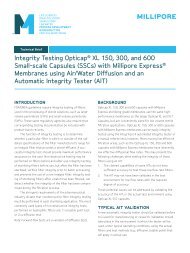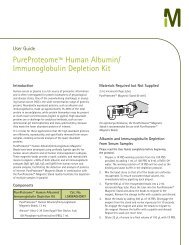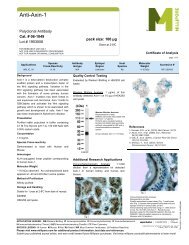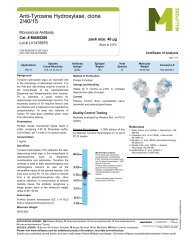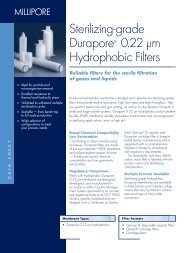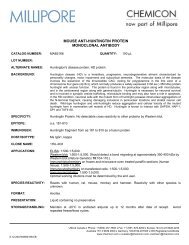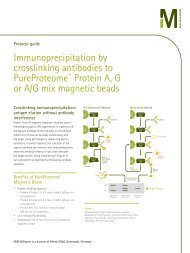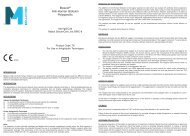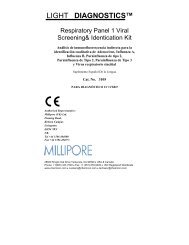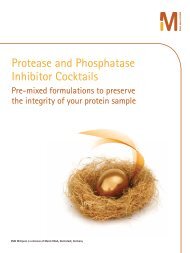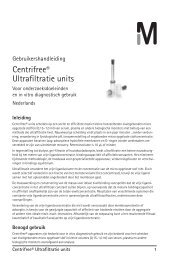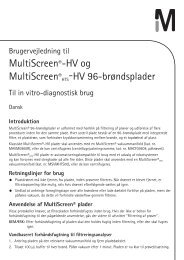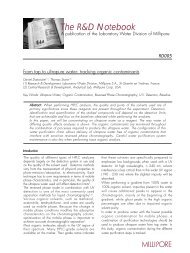Millistak+HC AppGd_textC.qxd - Millipore
Millistak+HC AppGd_textC.qxd - Millipore
Millistak+HC AppGd_textC.qxd - Millipore
You also want an ePaper? Increase the reach of your titles
YUMPU automatically turns print PDFs into web optimized ePapers that Google loves.
typical operating conditions). The<br />
addition of the membrane layer further<br />
enhances the retention capability of<br />
the A1HC prefilter, to increase sterile<br />
filter protection dramatically.<br />
In order to achieve this level of<br />
sterile filter capacity, the prefilter must<br />
be highly retentive to small particles<br />
and colloidal materials. The correlation<br />
of sterile filter capacity with the turbidity<br />
of prefilter effluent is shown in<br />
Figure 5. The data show that, to reach<br />
sterile filter capacities in the range of<br />
500 L/m 2 , the prefilter must reduce<br />
fluid turbidity to well below 10 NTU.<br />
0.22 µm Durapore Capacity<br />
(L/m2 @ 20 psid)<br />
700<br />
600<br />
500<br />
400<br />
300<br />
200<br />
100<br />
0<br />
0<br />
Clarified Mammalian Cell Culture<br />
Figure 5. Sterile Filter Capacity as a Function of Feed Turbidity<br />
Depending on the primary clarification<br />
process employed (as shown<br />
in the process schematic in Figure 3<br />
above), secondary clarification will<br />
further reduce turbidity levels by a<br />
factor of 5:1—100:1. Note that<br />
monitoring effluent turbidity can be<br />
a useful guide in determining prefilter<br />
performance, but it should not be used<br />
for actual sterile filter sizing, due to<br />
the complexities of membrane fouling.<br />
Post-Centrifuge<br />
Centrifugation is by far the most<br />
widely practiced method of bulk<br />
cell mass removal for fermentation<br />
10 20 30 40 50<br />
Turbidity (NTU)<br />
1.54 PCV,<br />
60% Viability<br />
Millistak+ HC Filters Application Guide 7



